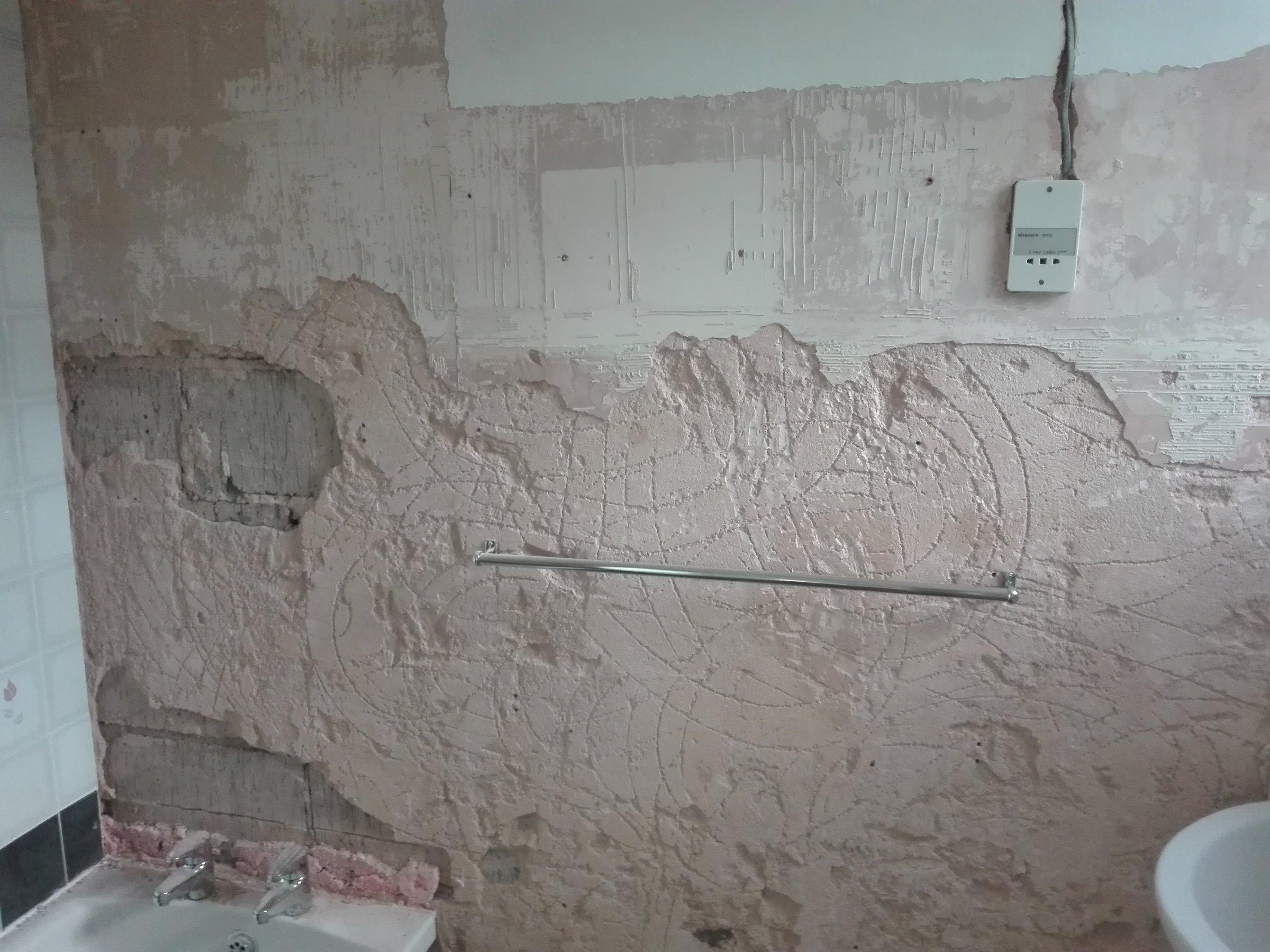We are redoing the bathroom walls, and have removed the tiles. Some came off really easy (think this bit of wall was painted underneath) others came off ok but pulled the plaster skim off, others were a nightmare and pulled the render off too:
Yes, those black tiles really were stuck down with expanding foam... and others with silicone. Since i'm gong to tile the wall anyway (probably) i thought the best plan was to take the skim off the top half of the wall, then just tile straight onto the render, but the top half of the wall is solid, and the plaster doesnt want to come off easily! So... i thought i'd have a crack at skimming myself, since it wont be visible if i muck it up, but a few questions if i can...
1) I will need to fill the larger holes in the render (whats best for this - sand and cement or bonding? - walls are lightweight blocks)
2) Do i need to pva the render before plastering, or just moisten?
3) Can i skim the bottom half of the wall with one coat, then skim the whole wall with a nother coat, will it crack half way up the wall if i do?
4) There are some deeper holes in the render, but not through to the blocks, will i need to top these up, or will the multifinish fill them ok? Hard to see but there is a pic:
5) In the top right of the wall it is actually a dormer, so plasterboard not block, the render is missing here, what can i use to bring the level up (similar to q 1 i know), can i use cement render or not? picture below:
6) Is there anything i havent thought of?!
Thanks - p.s i can get more pictures of the holes if needed!
Yes, those black tiles really were stuck down with expanding foam... and others with silicone. Since i'm gong to tile the wall anyway (probably) i thought the best plan was to take the skim off the top half of the wall, then just tile straight onto the render, but the top half of the wall is solid, and the plaster doesnt want to come off easily! So... i thought i'd have a crack at skimming myself, since it wont be visible if i muck it up, but a few questions if i can...
1) I will need to fill the larger holes in the render (whats best for this - sand and cement or bonding? - walls are lightweight blocks)
2) Do i need to pva the render before plastering, or just moisten?
3) Can i skim the bottom half of the wall with one coat, then skim the whole wall with a nother coat, will it crack half way up the wall if i do?
4) There are some deeper holes in the render, but not through to the blocks, will i need to top these up, or will the multifinish fill them ok? Hard to see but there is a pic:
5) In the top right of the wall it is actually a dormer, so plasterboard not block, the render is missing here, what can i use to bring the level up (similar to q 1 i know), can i use cement render or not? picture below:
6) Is there anything i havent thought of?!
Thanks - p.s i can get more pictures of the holes if needed!




